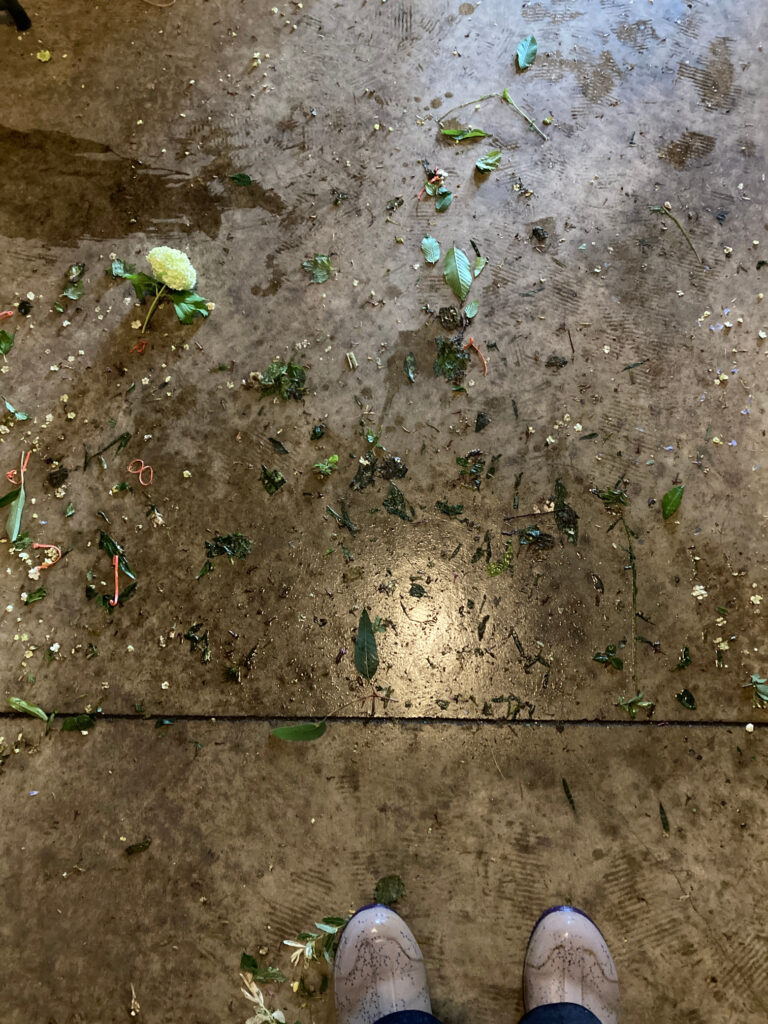Combating Ethylene Damage in Cut Flowers: An Unseen Threat
As a florist, the longevity and quality of your floral arrangements are paramount to your success. One of the sneakiest threats to the freshness of cut flowers is ethylene gas. This naturally occurring plant hormone, which is odorless and colorless (i.e., invisible) can significantly reduce the vase life of flowers, affecting customer satisfaction and potentially impacting your business’ bottom line. Understanding how ethylene gas operates and how to mitigate its effects with is essential for any floral professional, including your team and freelancers!
The Science Behind Ethylene Gas
Ethylene (C₂H₄) is a gaseous plant hormone involved in regulating a wide range of biological processes in plants, including fruit ripening, leaf abscission (drop), and flower senescence (aging). Even miniscule amounts of ethylene can rapidly accelerate the aging processes in cut flowers. What does this mean? Your stems may experience premature wilting, petal drop, and color loss.
Studies have shown that ethylene levels as low as 0.1 ppm (parts per million) can significantly affect sensitive flowers. Not all flowers are sensitive to ethylene, but some of the staples in our industry, like roses, carnations and lilies, are very prone to wilting and petal drop if even a little ethylene is in their immediate environment. Ever have your roses come in from the wholesaler with bent/floppy necks? They were exposed to ethylene somewhere along their route.
Flowers available through PFG that are particularly sensitive to ethylene are snapdragons, stock, campanula, lilac, viburnum, and foxglove. If you’re just learning about ethylene and/or local flowers, there’s a very helpful feature in our online shop that will tell you if the flower you are purchasing is sensitive to ethylene. Look for the little green apple in the product description. Any product with that symbol is prone to petal drop and wilting if exposed to ethylene.

Sources of Ethylene in the Florist Environment
Ethylene gas can originate from various sources commonly found in and around floral shops and studios:
- Decaying Plant Material: This is the #1 sneaky way ethylene gets into our coolers. In a busy week, we all know how dirty the cooler floor gets. Broken stems, dropped blooms, fallen leaves. As we go in and out, we trample this debris. Some gets pushed under shelves and forgotten, where it starts molding. All of this natural decay emits ethylene.
- Ripening fruits and vegetables: Apples, bananas, and tomatoes are notorious for emitting high levels of ethylene and should never be stored anywhere near cut flowers and most definitely never in your cooler!
- Combustion: Vehicle exhaust and cigarette smoke are significant contributors. This is why you should never leave delivery vehicle doors open while the vehicle is running and don’t let your drivers smoke while on their route.

Strategies for Preventing Ethylene Damage
To safeguard inventory from ethylene damage, implement the following:
- Ethylene-Free Storage: Clean your cooler religiously! At PFG, we do a deep clean of our coolers every week, including moving the shelves out to sweep up under them. Do not allow any decaying plant material, even just a petal or a few leaves, to linger in your cooler. And, of course, always utilize separate refrigeration units for flowers and fruits/vegetables to prevent cross-contamination.
- Enhanced Air Exchange: Ethylene has this very pesky habit of building up in a cooler or other enclosed area and not leaving. So while you might have cleaned the cooler, it could still be in the air. Once a week, while cleaning, put a fan in your cooler and prop the door open so you can get fresh clean air into the space. If you’ve had a hard time managing ethylene or can’t empty your cooler on a regular basis to air it out, you can add an ethylene scrubbing filter to your cooling system.
- Optimal Temperature: Maintain storage temperatures between 33-36°F for most cut flowers. Lower temperatures slow down the metabolic process in product that produces ethylene.
- Ethylene Inhibitors: Utilize ethylene action inhibitors like 1-Methylcyclopropene (1-MCP). Studies show that 1-MCP can extend the vase life of ethylene-sensitive flowers by up to 100%. However, a word of caution about these products. They are highly toxic to our environment so use sparingly and with great care. Implement the above, chemical-free strategies before resorting to inhibitors.
- Use of Ethylene Absorbers: Incorporate ethylene-absorbing materials in storage and display environments. Products like potassium permanganate sachets can reduce ethylene concentration by up to 80%.
- Professional Handling Practices: Educate staff on the importance of handling practices that minimize ethylene exposure. This includes immediate removal of damaged or decaying flowers from the work space and avoiding mechanical injuries to stems and petals, which can increase ethylene sensitivity.
- Customer Education: If you offer retail arrangements, it is a good idea to include a care card with each bouquet to explain to customers that they should keep their flowers away from ripening fruits and vegetables. Customers always appreciate a little education, which is why we work hard to do that here at PFG with blog posts and our podcast.

